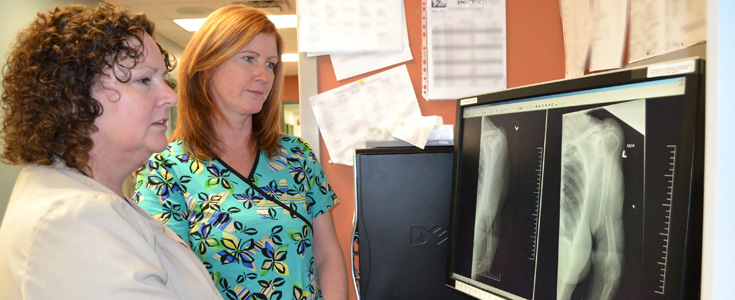
It's been over a year since the Region announced its plans to improve patient flow. Since then, an education campaign has been launched to help educate people about receiving the right care at the right time in the right place: My Right Care.
I think as nurses there are many ways we can positively impact patient flow. That's why I'd like to get you thinking about what you can do, and inspire you to use your expertise and influence to help further improve patient flow.
Related links
Revamping a tried and true concept
A new approach to placements in personal care homes
Team huddles improve communication and keep patients flowing at Concordia Hospital
It starts with two key things: getting back to basics and shifting thinking.
Back to basics means focusing on ways to contribute to the outcomes of patients. How can you, as a nurse (regardless of what area of health care you work in), help build health, aid recovery, promote health and potentially reduce a person's length of stay? How can you reduce the burden of illness . . . and how can you ensure that the right things to do for the person are also the right things for the system, across all sectors?
Getting people moving as quickly as possible to maintain function and mobility, for example, is a way to go back to nursing basics. It's also an element of nursing Florence Nightingale advocated for: "Nursing is an act of utilizing the environment of the patient to assist in recovery."
Nightingale identified that getting people up and moving speeds things up. Mobilizing people, getting people on their feet creates a shift from someone who is horizontal and sick to someone who is vertical and "not feeling well".
With a growing number of people over the age of 75 receiving health services, this is even more important. Seniors can become deconditioned and delirious while in our care and this is something that we as nurses can intervene to prevent. Click here to read more about the impact of getting people moving.
Shifting perspective ultimately means looking at your daily practice to ensure two things: you're providing safe, quality care to the people you're responsible caring for and that you're thinking about those who may be waiting to access that same care.
Part of high quality, safe health care is access. As an example, delaying a discharge from care by a day or even by a few hours at the end of a stay when the person is most stable, can negatively impact the person who is waiting for care when they are the most acutely ill. It is about finding balance in how we use the health care resources available to us.
We hear lots about how care is delivered in silos and how this negatively impacts flow. I am often struck by how little nurses working in one sector know about the care provided in another and the assumptions that are made. I would ask you to think about the path of flow for the people you care for - where do they come from? And where do they go next on their care trajectory?
Once you understand this, the challenge is to learn about these other parts of the system and use this knowledge to help make safe and timely transitions in care. For example, triage nurses in emergency are working to gain better knowledge of the health resources in their local communities so they can become better sources of information about other options for care.
Look at how you can build relationships with nurses practicing in different areas who have different specialties so that you can clearly communicate with other areas of health care, to benefit the person you're caring for. Facilitate conversations - and make sure they're happening - around how to best provide safe care and transitions.
Please pick up the phone and make a call to start these conversations. You're never too busy to make - or take - a call related to safe care. One call can provide clarity, direction and even the chance for brainstorming with your colleagues. Take the time to proactively address what's most important and relevant in transitions by talking about them. Guided communication can become part of the person's chart.
Nurses also have a role to play in educating the public around their health care options. The system is complex and can be difficult to navigate. Nurses can have this information and share it with the people they care for, and their families to further facilitate that people get the right care at the right time in the right way.
For example, once a person is out of an acute phase of their illness or injury, their recovery can often better be supported in their home, rather than the hospital.
This concept requires communication and planning. It's about paying attention to detail and coordinating things, which nurses are really good at. It requires collaboration to make sure that, along with health care providers, the person and their family are all focused on the same discharge plan and timeline.
It also requires nurses educating people. It means being clear with families that discharge will happen and what needs to happen to prepare everyone for that.
What I want nurses to remember is that hours and minutes count for patient flow.
The shorter number of minutes a person is on a stretcher in emergency, the better for that person and the faster the next person who needs it can access it. The more we can cycle available space, the faster we can cycle available space, the more people receive care.
Think about it - if longer occupancy of one person is preventing other people from using a particular resource - be that bed space, or someone's time, for example - fewer people can use the resource. That doesn't serve the needs of the public and it does not facilitate patient flow.
Patient flow isn't about one particular area. It means educating people that the hospital is a good place to be when you need to be there, but that you need to get out as soon as possible. Why? It's not necessarily better or safer to be in the hospital, and home care also plays a role in meeting health care needs in the community.
Providing quality nursing care, and coordination of care with a lens that includes timelines are ways nurses can contribute to system flow. Nurses can help people get the care they need when they need it.
Enhanced communication - via whiteboards and huddles - don't replace the need for a clear, direct conversation. But they are tools that can enhance communication with people, their families and with health care providers, allowing them to work more collaboratively within a program but also within a facility or site.
To me, patient flow means people have access to care when they need it. I want to hear what you're doing to help improve patient flow. Have you introduced a nurse-initiated effort that's making a difference? Have you started working with these two concepts and had an a-ha moment? If so, I want to hear about it - drop me an email at [email protected]. Successes need to be celebrated and shared.
